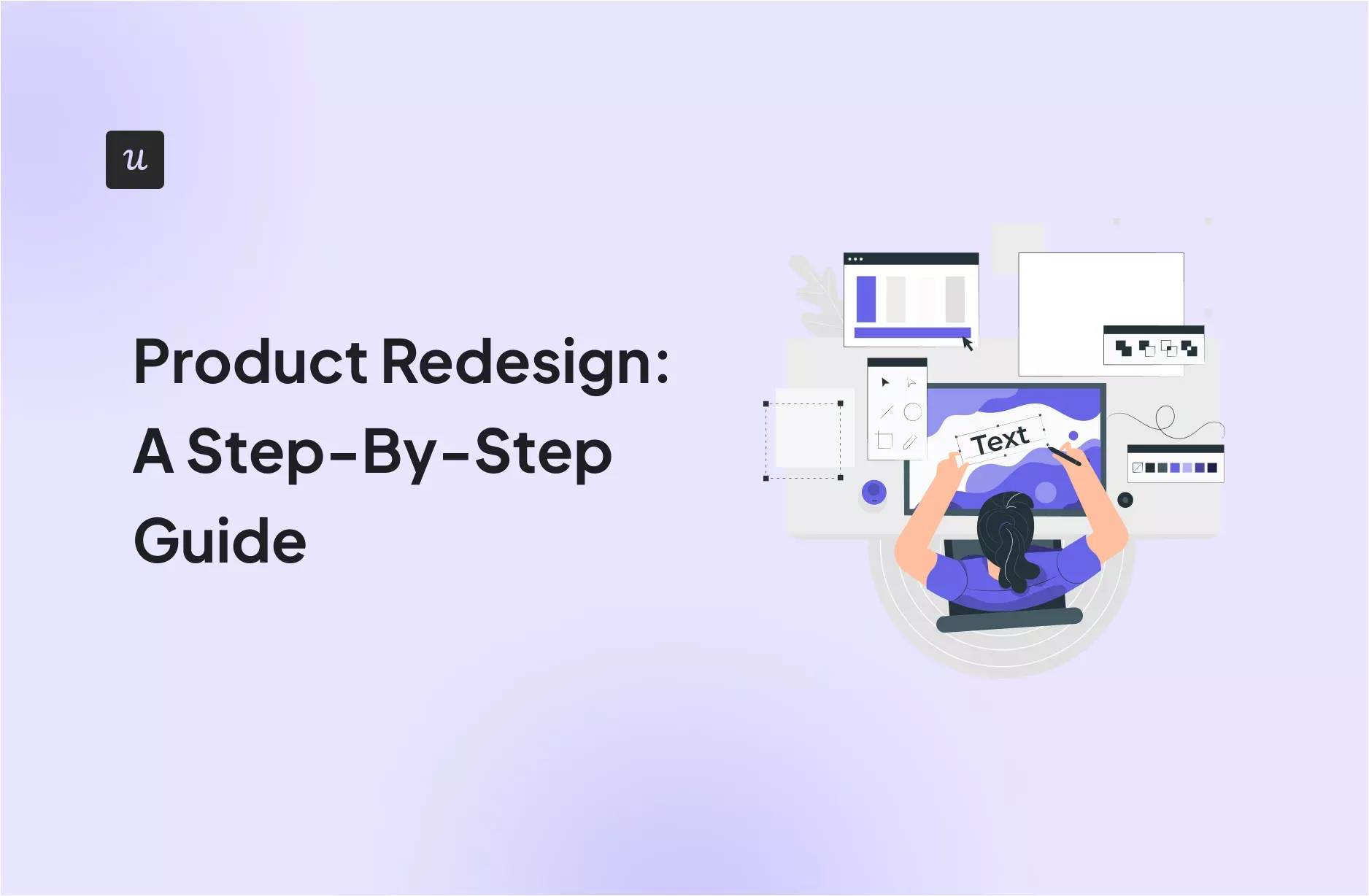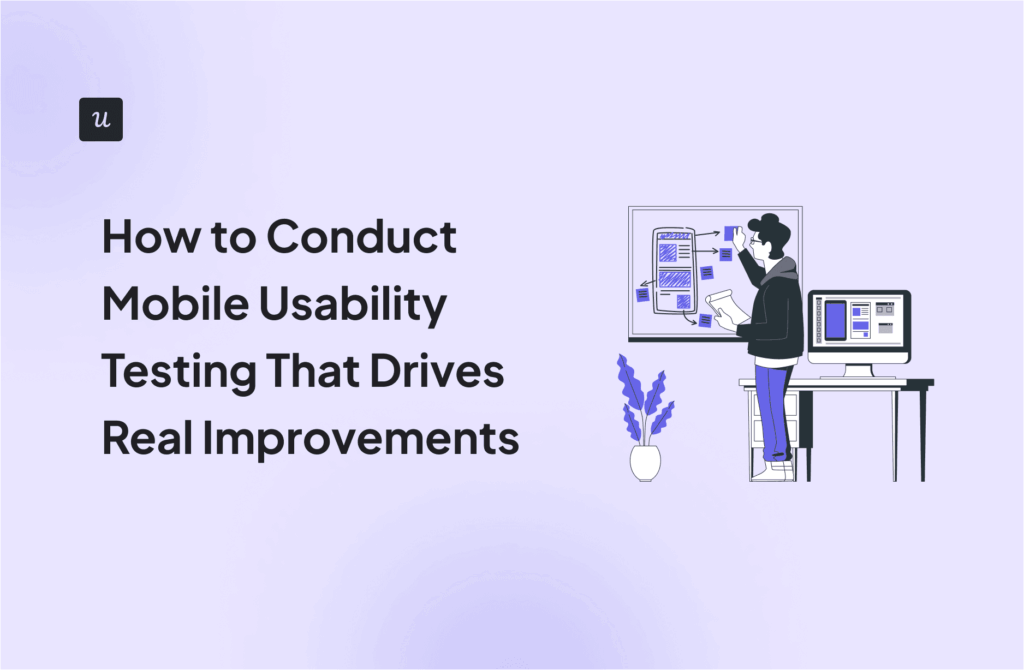
Dated or clunky user interface design, poor performance, negative user feedback, and obsolete infrastructure that doesn’t support further product development – all of these are reasons why you may need to consider product redesign.
From this article, you will find out what product redesign is, discover its benefits, and learn how to do it.
Get The Insights!
The fastest way to learn about Product Growth, Management & Trends.
What is a product redesign?
Product redesign is the process of reinventing and rebuilding your existing product. It’s not about minor tweaks but significant changes to the user experience – the way it looks, works, and makes the user feel.
What are the main reasons for redesigning a product?
There are a bunch of situations when you may want to consider redesigning your product.
Outdated look and feel
One reason for product redesign is to make the user interface look and feel more modern.
Apart from keeping your product fresh and stimulating for the existing customers, you also want to make the right impression on your new users. A dated look may make them think that the rest of your product isn’t very modern either.
Low conversion and retention rates
If your conversion or retention rates start going down, it may be time to start looking at redesigning your product. These two show that the product doesn’t meet the needs of the new and existing users anymore, and you must act.
Negative customer feedback on current design and usability
Negative feedback on the current design and usability is a very clear indication that your product design needs changes. Make sure to follow up on it to find out how to redesign your product to better meet your customer expectations.
Expansion into new markets
Expanding into new markets may be another reason for product redesign projects.
Product designers may not have planned for it originally, so to successfully internationalize and localize your product, you may often need to change its design completely.
New features or product upgrades
Introducing new features or product upgrades often needs product redesign.
This is particularly true for SaaS start-up products, like mobile apps, that grow quickly in their early days and accumulate a lot of UX and technical debt. Sooner or later, they reach a stage when the current product can’t grow any further without a major redesign.
What are the benefits of product redesign?
There are a number of benefits of product redesign.
To start with, it gives you a chance to improve your product usability. That means it will be easier for your customers to experience value and get their jobs done.
What’s more, responding to feedback and trying to solve their problems improves customer loyalty and creates a good company image. If you look after their needs and respond to their feedback, your users are less likely to switch to another product. And more likely to turn into product advocates.
Revolutionary vs. evolutionary redesign
There are two main approaches to product redesign.
The revolutionary redesign is like building and launching a new product. Once the new design is ready, it simply replaces the old one. Or you can smoothen the transition and allow your users to get used to the new design before phasing out the old one.
Evolutionary redesign is gradual and involves incremental innovation. Instead of redoing the whole product in one go, the product team redesigns and releases one feature at a time.
The step-by-step process for a successful product redesign
Whether you choose the revolutionary or evolutionary approach to redesigning your product, you need to follow a few basic steps.
1. Define your business goals and objectives
Before you embark on the redesign journey, make sure you have a clear idea of what you want to achieve.
Is it addressing specific customer pain points or meeting new user needs? Or maybe introducing functionality that your competitors already have? Improving revenue? Ensuring compliance with new government regulations?
Whatever the objective, make sure your whole product team is in sync on that.
Change for its own sake will waste precious resources, and the lack of focus will result in a mediocre product.
Not sure how to set goals for your redesign?
Use a goal-setting framework, like SMART. It stands for Specific, Measurable, Achieveable, Relevant, and Time-bound. That’s what your goals should be like.

2. Conduct user research to identify areas for improvement
To give the desired results, the product redesign process needs to be based on robust evidence, so the next step is conducting user research.
The aim is to develop a deep understanding of your existing as well as potential users. You need to learn how they feel about the product, what they like about it, and what they don’t, and identify areas that need to be fixed or developed to meet their needs better.
How do you do it?
The quickest and cheapest way to collect mass feedback is through in-app surveys.
For example, NPS surveys are great for measuring user satisfaction and loyalty.

The NPS survey should come with follow-up questions to gather more qualitative insights. You will use these to inform the redesign process.

To help you analyze the data and identify patterns, you can tag responses by using a theme or keyword.

Once you analyze survey feedback, follow up with user interviews to explore the identified themes in more depth.
3. Pair user research with product usage analytics
Let’s face it: users often can’t tell you what exactly works for them or how they behave inside the product. Most people don’t have a habit of reflecting on their interactions with the product, while others can’t clearly articulate it.
So?
Supplement the survey data with product analytics to give you a more complete and objective picture.
For example:
- Path analysis can help you find the most optimal ways to complete tasks.
- Track feature usage trends to find features that don’t deliver value.
- Use funnel analysis to identify friction in the user journey.

Use the insights from feedback and analytics to propose solutions to the identified user problems.
4. Create a prototype and validate your concept with real users
Even when the user feedback and usage data clearly show what feature or functionality you should redesign, it doesn’t mean your redesign project will be successful.
Whenever a major change is introduced, there’s a risk you will face user resistance, which could result in churn. More importantly, the new design could replace the old usability issues with new ones.
To maximize the chances of success, make sure to validate your product redesign ideas through user testing before you commit to their development.
Prototyping is one way to check if an idea stands a chance. In the early stages, you can start with very low-fidelity prototypes, and when the response is favorable, invest in building high-fidelity ones.
To limit the potential damage, test the solutions you’ve developed on a small user cohort before rolling them out to the rest of your user base.
Apart from usability testing, you can invite a group of users to beta testing.

5. Run marketing campaigns and prepare users for the release
Redesigns don’t require as much marketing effort as new product launches.
However, you still need to prepare users so that they don’t get surprised when the new UI or features are finally released.
We’ve all been through the frustrating experience of logging into a product we’ve been using for months to discover that a feature we urgently need had been moved, and nobody bothered to let us know.
Don’t make this mistake, and make sure your marketing team comes up with a solid launch announcement plan.
In your communications, focus on the major improvements and how they’re going to benefit your users.
Just like in this Slack email announcing its UI redesign.
The headline, “A Slack experience built for focus,” clearly states the main benefit, and the subtext reinforces the message by explaining how the new design will help users.

To make sure you reach most of your users, don’t rely on a single message. Instead, create a sequence of communications starting a few weeks before the release.
In this way, you not only give your users time to get familiar with the upcoming changes but may be able to build some hype around it!
Your marketing campaign should continue also after the launch. Follow up the launch day announcements with more messages targeting the segments that haven’t engaged yet.
6. Launch the redesigned product to your audience
When launching your redesigned product, don’t rely on one channel to announce its arrival.
- In-app messages allow you to reach active users and prompt them to engage with new features or the new design.

- Email announcements can draw users’ attention to the redesigned product or features even when they aren’t actively using the product anymore. That’s how you can tempt them back to your product.

- Social media posts reach not only your existing users but also potential ones. They can generate interest in your product and aid your customer acquisition efforts. They can also reinforce your position as an innovative company.

7. Create an effective onboarding flow to educate users
As product redesign involves major changes, your users may find it difficult to complete their tasks.
The solution?
Design onboarding flows that help them explore the new functionality or UI.
Use a checklist to structure the whole onboarding experience and create a walkthrough for each checklist task. In this way, you guide users through the key changes and teach them how to make the most out of them.
For mobile apps, you can also create mobile-first onboarding flows by customizing welcome screens, carousels, and slideouts to deliver personalized messaging.
Here’s my pro tip:
Personalize these for different user personas to make them relevant and reduce the time needed to find their way around the newly redesigned product. There’s no point showing someone features that they never used or needed.

8. Measure the performance of the redesign product
As soon as you launch the redesigned version of the product, measure its performance.
The simplest way is to track metrics like user engagement or product usage over time. They will give you an indication of how well users adopt the new product.
Apart from that, use the same techniques that you used when researching the redesign (funnels, paths, trends, session replays, etc.). Add cohort analysis to see if the changes have had any impact on user retention.
And collect user feedback to gauge customer satisfaction with the new product.

9. Continuously iterate to improve user engagement
The launch isn’t the end of the product managers’ or product owners‘ work. It’s the beginning.
Let me explain:
Even if you’ve researched your user needs and behavior before the redesign and validated the ideas religiously, issues will come up when real users start using the product to solve real-life problems.
So, use the feedback data to implement necessary changes.
Work in small iterations. Make a change and test its impact. This makes it easier to control the variables and avoid wasting time.
A/B tests are handy for this.
Here’s how they work: You create a different version of a feature, say a navigation menu, and release it to half of the test samples. The other half uses another version, either existing or new. And compare which of them performs better.
With Userpilot, you can A/B test the performance of your in-app flows. VWO and Optimizely are popular tools for A/B testing other design elements.

How CYBERBIZ revamped their product with Userpilot
CYBERBIZ, a Taiwanese e-commerce platform, discovered that its admin panel wasn’t user-friendly and intuitive enough. As a result, users weren’t able to complete all their tasks as efficiently as they wanted.
To address the issues, the company decided to redesign the feature.
Userpilot analytics helped them prioritize the features for redesign, starting with those that had the greatest engagement.

Once the redesign was ready, they used in-app surveys designed in Userpilot to collect user feedback. All issues the users brought up were added to the backlog.
The product team then conducted a more in-depth study by following up on each of the pain points to understand their true nature.
The surveys also helped CYBERBIZ to identify and recruit beta testers.

Following best practices, CYBERBIZ leveraged Userpilot analytics to gather objective data about the performance of the redesigned admin panel.

Conclusion
Product redesign brings big changes to the user experience. To make them successful, they need to be based on robust data, delivered and launched in a well-planned manner, and most importantly, solve the problems your users are facing.
To learn how Userpilot can help your product team collect feedback, run experiments, analyze user behavior data, and design bespoke onboarding experiences, book a demo!






